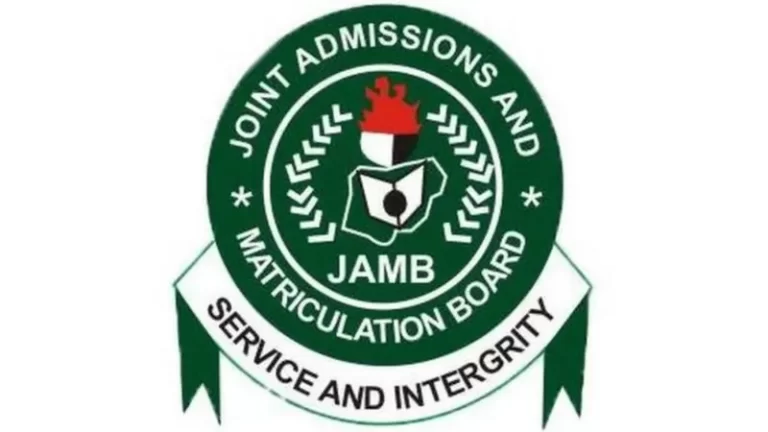Neco

History-Obj
01-10: CDBDEDCDEA
11-20: BBBEECECEA
21-30: BEBEABBCCC
31-40: DDACECDEBE
41-50: CECACCCECC
51-60: ECEAEBABEC
(5)
(i ) Demographic Disruption: The slave trade resulted in a significant loss of population in Nigeria. It is estimated that millions of people were captured and forcibly transported as slaves to the Americas. This large-scale forced migration created demographic instability and imbalances in various regions with some areas experiencing severe depopulation.
(ii) The slave trade during this period. Many coastal regions such as Lagos and Calabar became major trade hubs for slave auctions. European powers particularly the British established forts and trading posts in these regions manipulating local rulers to facilitate the capture and sale of slaves. This exploitation led to the extraction of Nigeria’s human capital and natural resources depriving the country of significant economic development.
(iii) Political Instability: The slave trade and its associated activities such as raiding and wars to capture slaves created political instability in Nigeria. Many kingdoms and communities engaged in conflicts with each other to gain control over territories and capture slaves. The rise of slave trading power dynasties further exacerbated these conflicts and weakened traditional political structures. This instability continued even after the abolition of the slave trade as power struggles persisted between different factions seeking to control economic resources.
(iv) Cultural Loss: The trans-Atlantic slave trade had a lasting impact on Nigerian culture. With the forced migration of millions of people many cultural practices traditions and languages were lost. The descendants of those who were captured and sold as slaves in the Americas often struggled to maintain their cultural identities and heritage resulting in a loss of cultural continuity.
(3)
(i) Agriculture: Agriculture formed the backbone of the Nupe economy. The kingdom was situated in a fertile region along the Niger River and benefited from favorable agricultural conditions.
(ii) Trade: The Nupe Kingdom was strategically located along important trade routes, serving as a middleman between the Saharan and West African regions. The kingdom facilitated the trade of goods such as salt, kola nuts, cotton, ivory, slaves, and other commodities.
(iii) Tribute: The Nupe Kingdom had a centralized political structure with a hierarchical system of administration. Local chiefs and rulers within the kingdom owed allegiance to the Nupe king, and they paid tribute in the form of goods, livestock, or labor.
(iv) Taxes: Nupe rulers likely imposed taxes on their subjects, including levies on land, livestock, and economic activities.
(v) Craftsmanship and Artistry: The Nupe people were known for their skilled craftsmanship and artistic traditions. They produced a wide range of goods, including pottery, textiles, woodcarvings, metalwork, and leather goods.
(vi) Tribute from Conquered Territories: The Nupe Kingdom expanded through military conquests, incorporating neighboring territories and kingdoms. Conquered regions would have paid tribute to the Nupe rulers, providing additional revenue streams
(1)
(i) Trade and Commerce: Establishing diplomatic ties allowed for enhanced trade and commerce between the states. This brought economic benefits to the states involved as they could exchange goods resources and services in a more organized and mutually beneficial manner.
(ii) Security and Defense: Diplomatic ties fostered a sense of unity and cooperation among the states which was essential for collective security and defense. By collaborating and forming alliances they could better protect themselves against common external threats such as raids from other states or external powers.
(iii) Cultural and Social Exchange: Diplomatic ties provided opportunities for cultural and social exchange. States could share knowledge traditions customs and technologies thereby enriching their own societies. This led to an increased understanding and respect for one another’s cultures fostering a sense of unity and shared identity.
(iv) Conflict Resolution: Diplomatic ties provided a platform for peaceful resolution of conflicts that might arise between states. By engaging in diplomatic negotiations disputes and tensions could be resolved through dialogue and compromise rather than resorting to violence and warfare. This promoted stability and prevented the escalation of conflicts.
(v) Communication and Information Exchange: Diplomatic ties facilitated the exchange of information and communication between states. This was important for keeping abreast of developments sharing news intelligence and coordinating actions which was particularly crucial in times of crisis or emergencies.
(vi) Political and Diplomatic Influence: Establishing diplomatic ties allowed states to gain political and diplomatic influence within the region. By forming alliances and maintaining cordial relations they could raise their stature and gain leverage in regional affairs. This enabled them to negotiate better terms in treaties and agreements and have a voice in regional decision-making.
(vii) Preemption of External Influence: By promoting diplomatic ties amongst themselves the various states aimed to preempt external interference or domination. This was particularly significant at a time when European powers were increasingly expanding their colonial ambitions in Africa. By presenting a united front the states could resist external pressures and maintain their sovereignty to a certain extent.
(8)
(i)The central legislative council: It was renamed the House of Representatives. The president was the Governor and it had 6 ex- official members. 136 representative members were through the regional houses and 6 special members were nominated by the Governor. The North sent 68 members while the West and East had 34 members which made up the 136 representatives.
(ii)The Central Executive Council: This was known as the council of ministers. The Governor was the president and there were6 official members, 12 ministers of which 4 represented each region. They were in charge of government departments and appointed by the governor on the recommendation of the regional legislature.
(iii)The Regional Legislature: The Northern and Western regions each had a bi-cameral House of Assembly and Chiefs. The Eastern region had only the power to make laws on certain issues like local matters, native courts, health, etc.
(iv)Regional Executive Council: Each region had an executive council. The Lieutenant Governor was the president and it had 5 official members and 9 ministers. They advised the governor but he could accept or reject their advice.
(v)The colony of Lagos was part of the Western region.
(vi)The three provinces were renamed, Western, Eastern and Northern regions.
(vii)The three chief commissioners for each province were renamed Lieutenant governors.
Completed!.
RECOMMENDED TOPICS
- JAMB 2025 UTME/DE registration document – step-by-step on how to apply for UTME and DE

- JAMB postpones 2025 UTME Registration to February 3rd

- JAMB Officially Announces 2025 UTME Registration, Exam, Mock Dates, Cost and Important Details

- The official reading novel for Jamb 2025 is Lekki Headmaster

- Subjects for Computer Science in JAMB for Guaranteed Success


